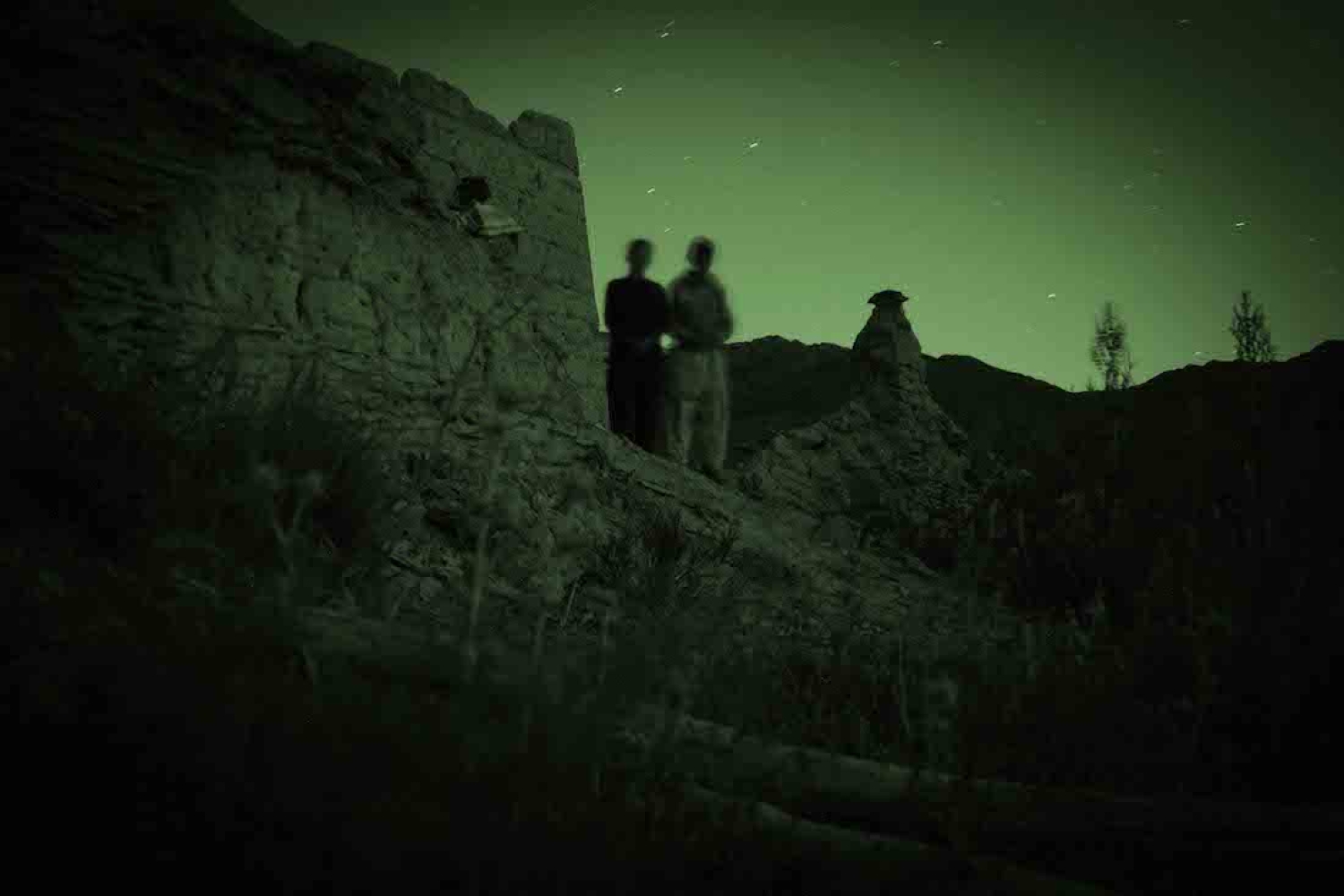

Experimenter presents No Starting Point for Revolution, Aziz Hazara’s first solo at the gallery and in the country. Hazara works across the mediums of photography, video, sound and installation. Through his works one encounters themes of memory, archive, surveillance, the panopticon and politics of representation in the backdrop of violence and war in Afghanistan. No Starting Point for Revolution intends to address what it is to live in a war zone, where the body and landscape are inherently in conflict. It proposes that any search for an end to war rests on resistance to and exposure of invisible structures of power and control that uphold it and the truths that lie behind them.
A central aspect to the exhibition is an investigation into power structures and technologies of surveillance, vision and image-making in contemporary warfare. Camouflage (2016) are photographs taken with military night-vision goggles used in night raids by foreign militaries, their local allies and later by trained paramilitary forces in occupied Afghanistan. These devices aid soldiers to detect their ambience image in obscure levels of light, also helping them to remain enshrouded in the dark. Through ambiguously disguised green-hued forms and dystopian landscapes, the images capture civilians caught unaware and staring directly at the camera. In another part of the gallery is Hazara’s haunting video Eyes in the Sky (2020) presenting a drone’s- eye view of a barren landscape where the camera pans across rugged and dusty hills and we see a young man blowing the smoke of espand (wild rue) against the sky. As the camera zooms in on this landscape, children wielding guns begin to appear trailing past terrains of abandoned tanks and detritus of war. At a halfway point, a child stares directly into the lens as the soundscape turns polyphonous blending in the sound of drones, helicopters, and calls for prayer, and the innocent surveilled child at once seems to reclaim their space and freedom.
Hazara often employs sound as a medium to signify both conflict and the collective. In Takbir (2022), silence and sound, darkness and light, operate as metaphorical devices in a transfixing nexus. The camera shifts into a steady, almost nauseating circular motion, causing city lights to dissolve into a trail of light calling out to infinity as resounding cries of Takbir (which describes the call Allāhu Akbar/God is great) emerge from all directions in unison. The call of Takbir resonated the night sky of Kabul, whose landscape the film follows, in the backdrop of the announcement of evacuation of US troops from Afghanistan in 2021, making way for the Taliban to once again take over the lives of citizens, symbolising a call to action for some, or a call in anguish for others. The sound echoes across the vast expanses of the starry night sky as a gesture of protest and mourning, juxtaposing both the individual and the collective engulfed in a perpetual war.
Date 24-04-2023